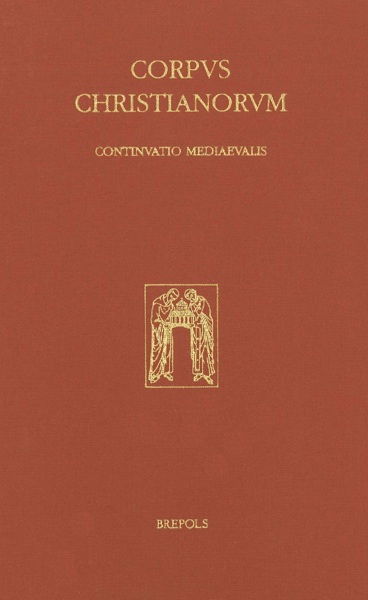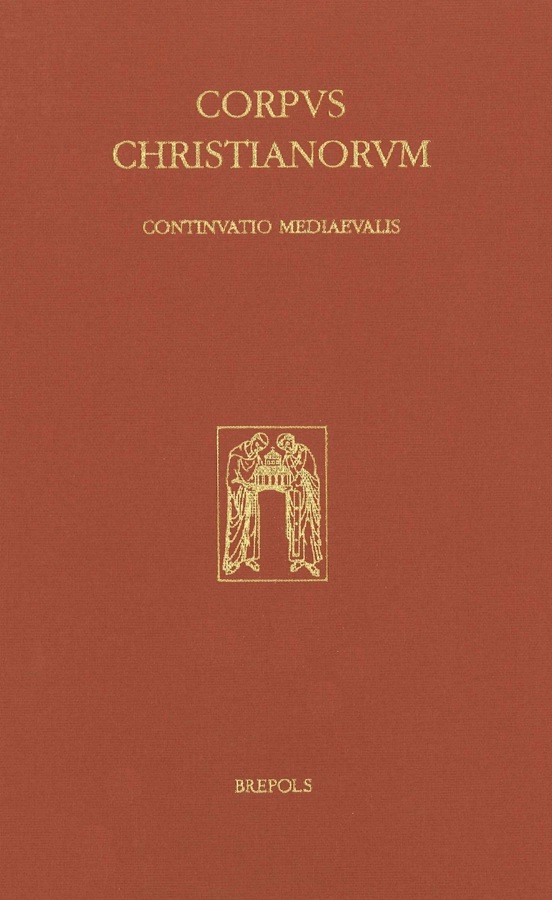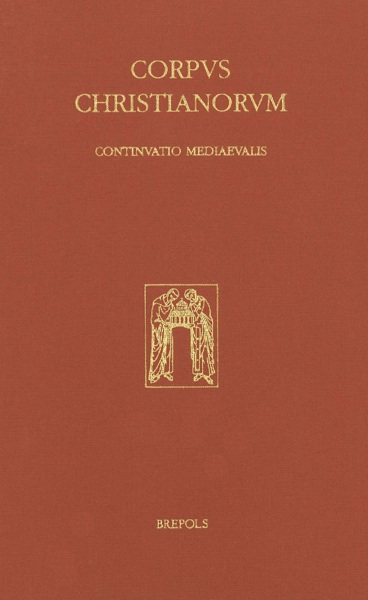
Gerardus Magnus
Opera omnia II, 1
Sermo ad clerum Traiectensem de focaristis - Opera minora contra focaristas
R. H. F. Hofman (ed)
- Pages: 653 p.
- Size:155 x 245 mm
- Illustrations:4 b/w
- Language(s):Latin
- Publication Year:2011
- € 340,00 EXCL. VAT RETAIL PRICE
- ISBN: 978-2-503-53346-9
- Hardback
- Available
"Yet the otherwise excellent introduction does make a strong case for why celibacy was viewed as so important for clerics by many in the fourteenth century, just as it is in the twenty-first century. Many recent works are cited to demonstrate this continuing interest in the topic. This book should greatly contribute to keeping the subject in the forefront of church scholarship and, with the later books in the collection, to offering a great appreciation of this figure in the development of the spirituality of the later Middle Ages and the Reformation." (Daniel Callahan, in The Catholic Historical Review, January 2013, Vol. 99, N° 1, p. 137-138)
Rijcklof Hofman is editor of the Gerardi Magni Opera Omnia at the Titus Brandsma Instituut, Radboud University, Nijmegen (The Netherlands). Earlier editions include Ioannis Rusbrochii Ornatus spiritualis desponsationis Gerardo Magno interprete (Corpus Christianorum, Continuatio Mediaeualis, 172) (2000) and Gerardi Magni Contra turrim Traiectensem (Corpus Christianorum, Continuatio Mediaeualis, 192) (2003), 745-814.
During a diocesan synod held in 1383, the Dutch Church reformer Geert Grote (1340-1384) delivered a sermon in which he vigorously attacked priests living together with concubines in the Diocese of Utrecht, whom he called focarists. After he had delivered his sermon, Grote worked it out into a written treatise comprising 26 dicta or chapters in more than 3500 lines.
Grote advocated a rigorous viewpoint. Thus, he pointed out in dictum 2 that anyone who attends the offices of a notorious focarist, commits a mortal sin. His strict position met with considerable opposition. This led to various minor works either summarizing the long sermon or elucidating particular points. In the end, Grote’s opponents succeeded in their efforts to bring about his downfall.
In the present volume the major documents in the focarists’ dossier are edited scientifically for the first time, replacing the earlier 1830’s edition. The volume also presents an editio princeps of a Middle Dutch partial translation as well as of a recently discovered fragment elaborating on the contents of dictum 2.
In unfolding his diatribe, Grote relies on a great number of authorities and predecessors. A detailed analysis of this wealth of material has resulted in a highly innovative assessment of Grote’s use of sources, included among the introductory matter.
Gerardus Magnus (Geert Grote) — Argumentatio suppletiva in defensionem secundi dicti [de focaristis] (fragmentum) — ed. R. Hofman
Gerardus Magnus (Geert Grote) — Articuli viginti quattuor de focaristis — ed. R. Hofman
Gerardus Magnus (Geert Grote) — Observationes quattuor de presbyteris fornicariis notoriis — ed. R. Hofman
Gerardus Magnus (Geert Grote) — Publica protestatio (ep. 57 ed. Mulder) — ed. R. Hofman
Gerardus Magnus (Geert Grote) — Quinque dicta seu puncta circa focaristas — ed. R. Hofman
Gerardus Magnus (Geert Grote) — Responsio ad iuristam quendam qui dictum secundum suum [de focaristis] refutare conatus est — ed. R. Hofman
Gerardus Magnus (Geert Grote) — Sermo ad clerum Traiectensem de focaristis — ed. R. Hofman
Iurista quidam anonymus (Gerardi Magni adversarius) — Scriptum contra dictum secundum, tertium, quartum et quintum magistri Gerardi Magni [de focaristis] — ed. R. Hofman





